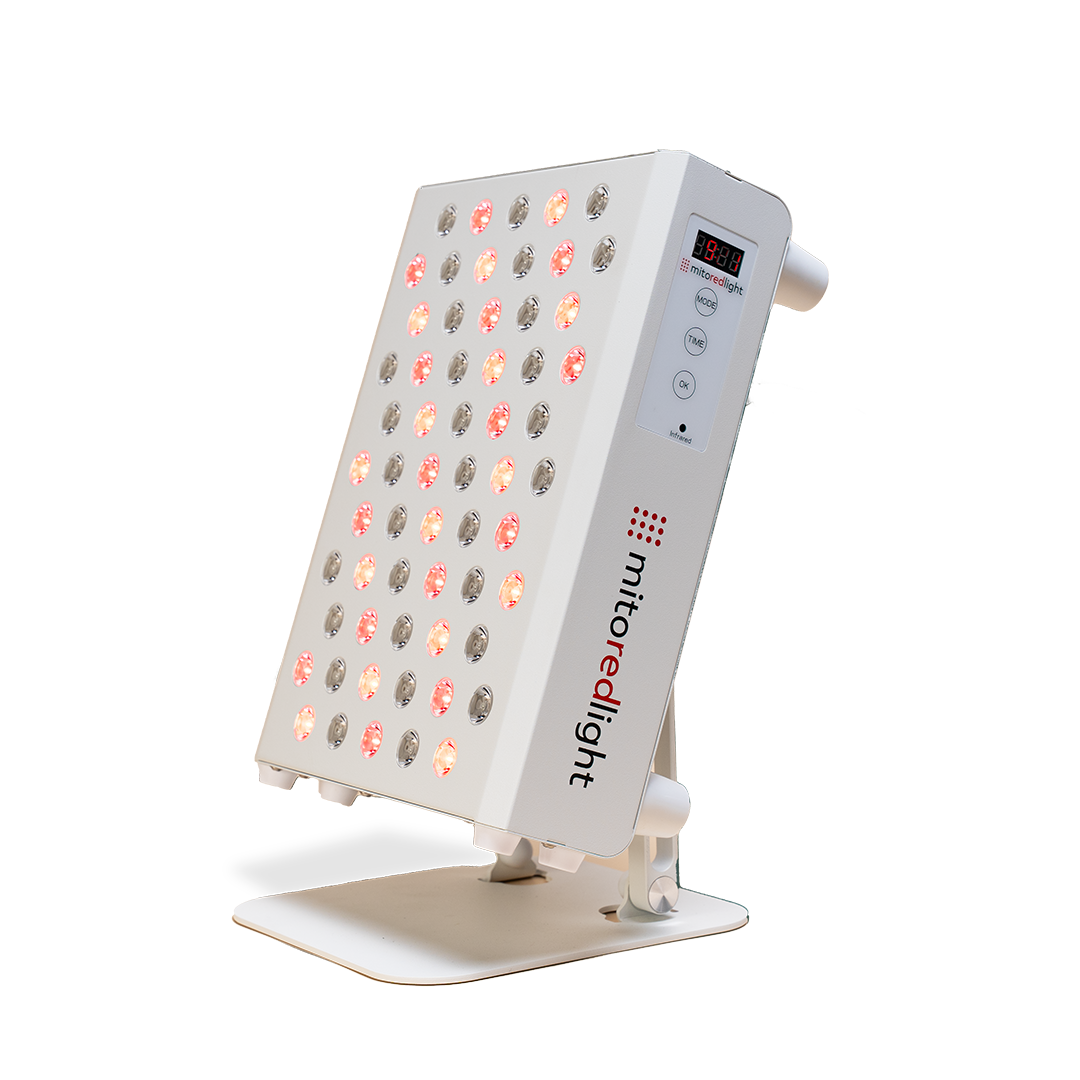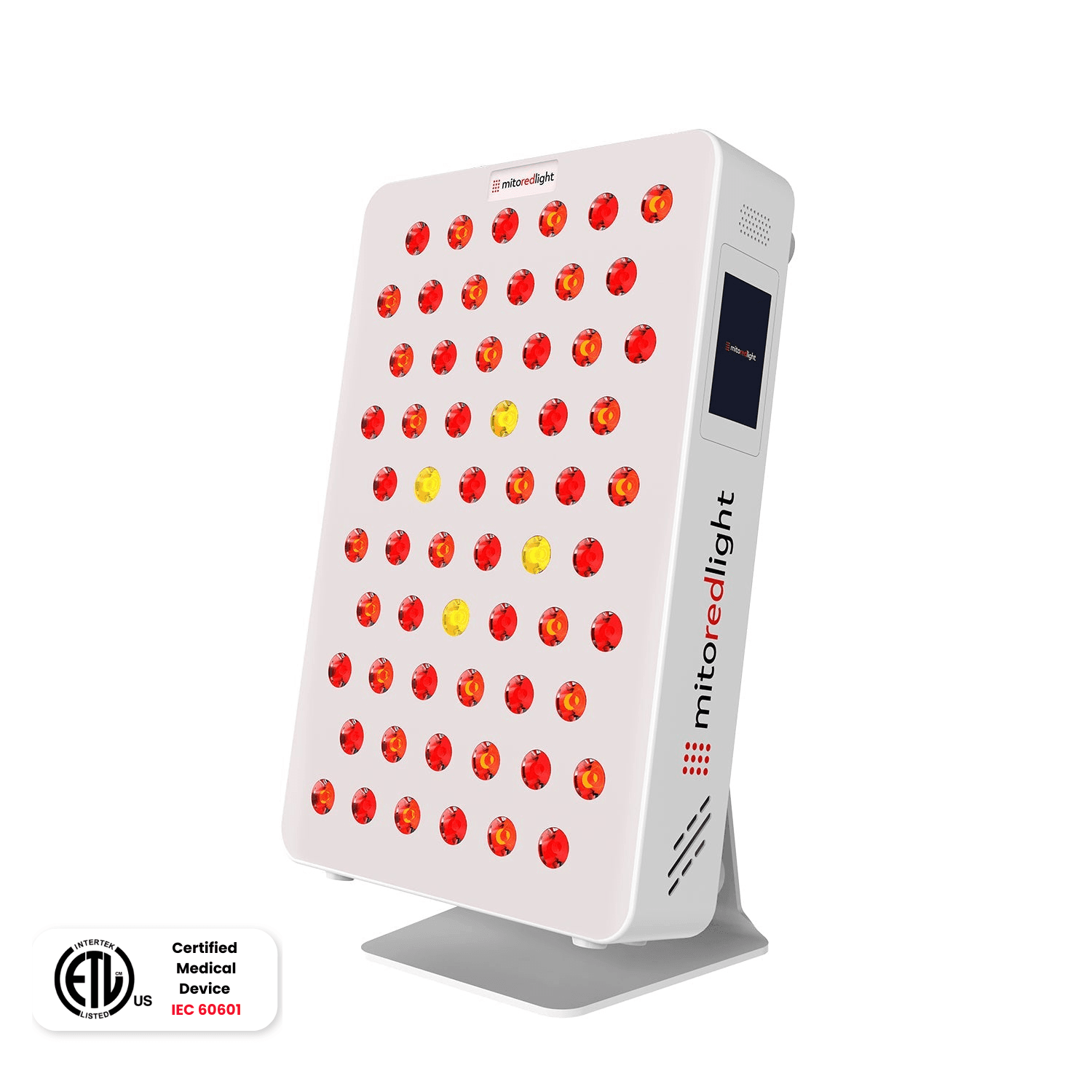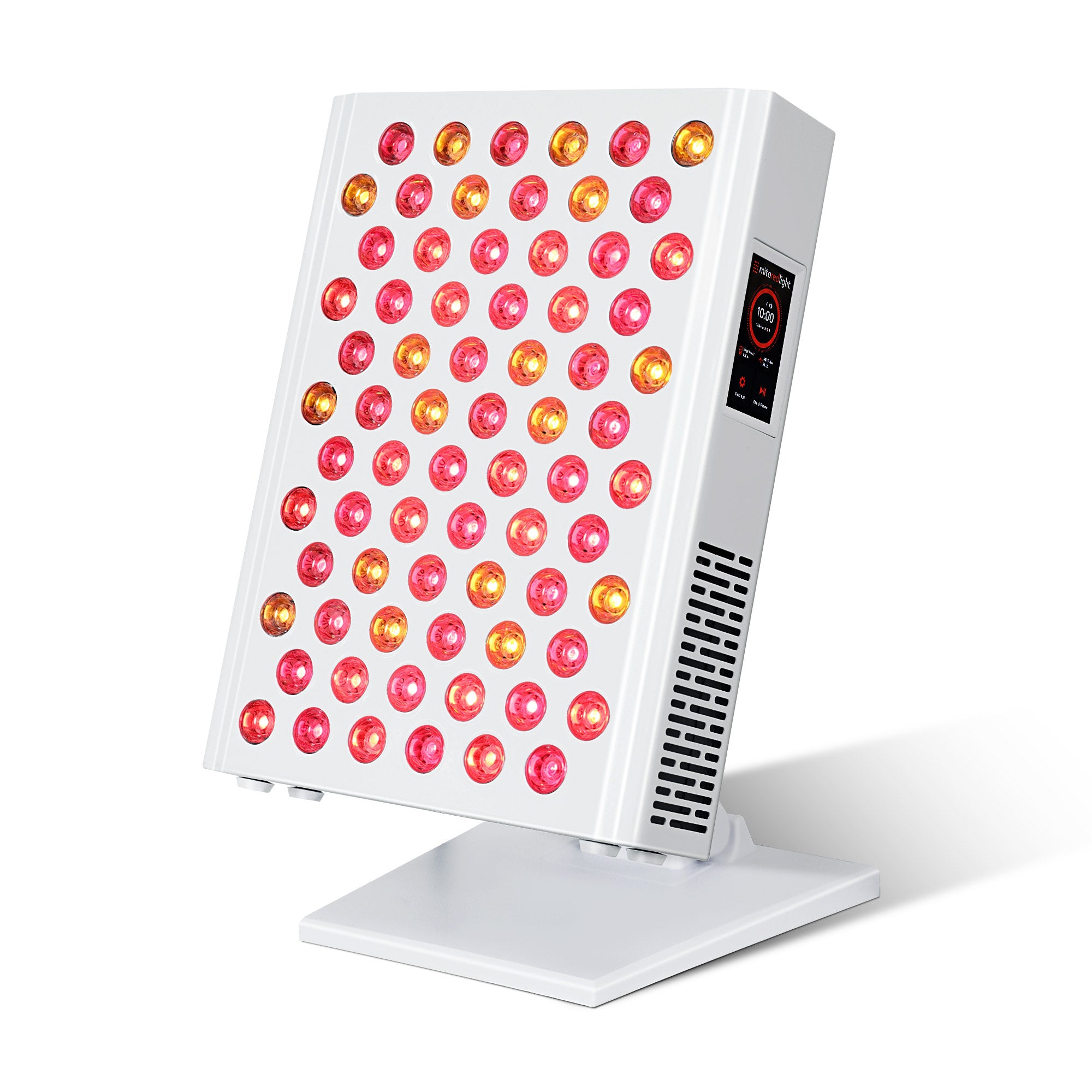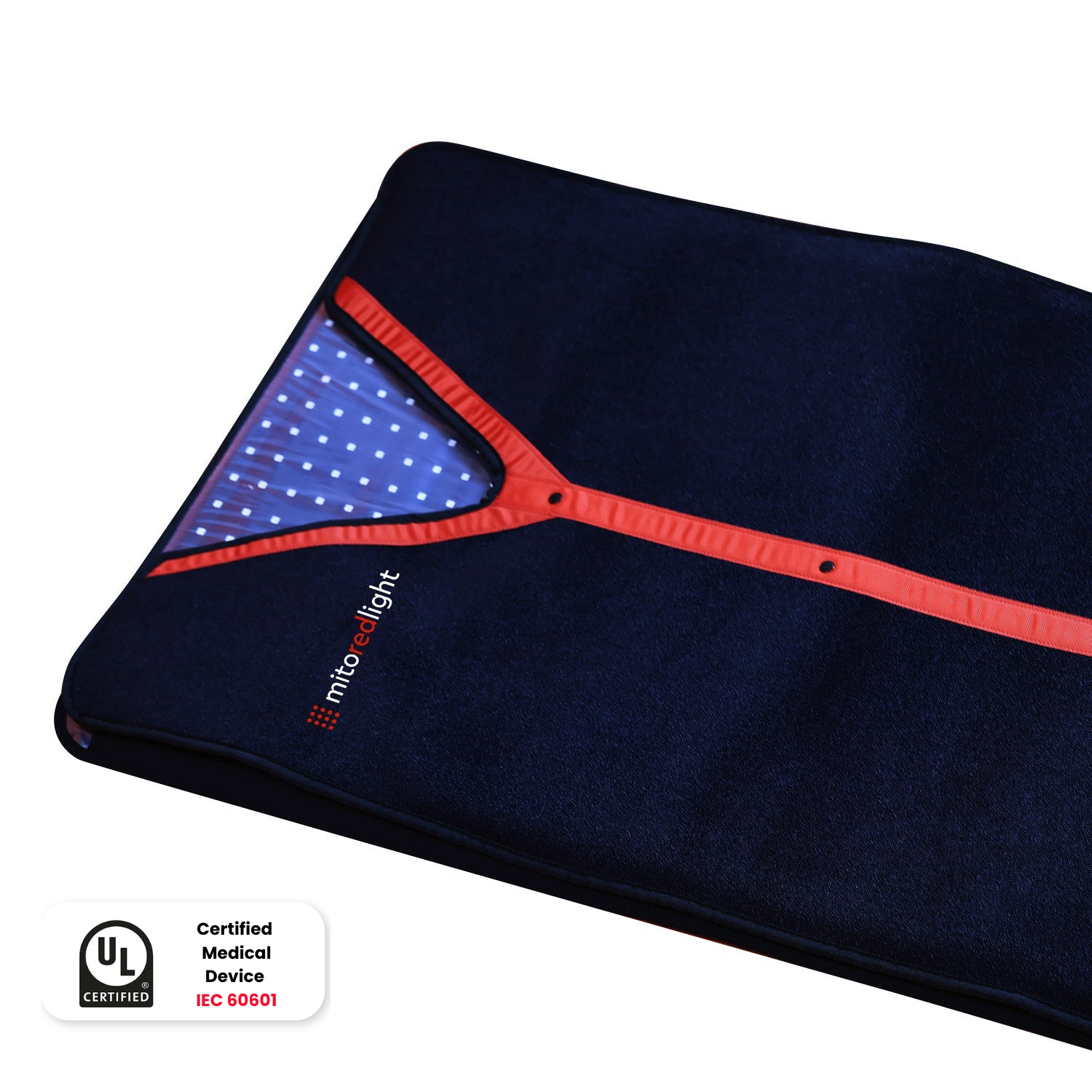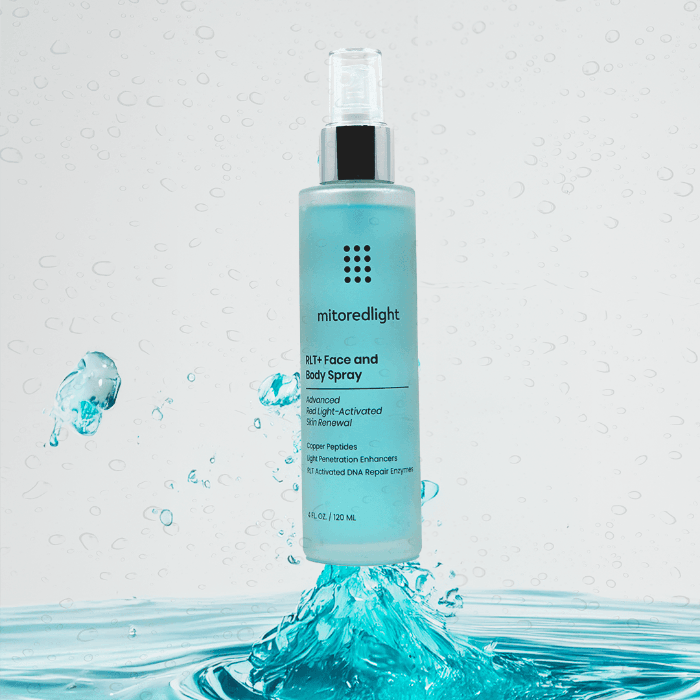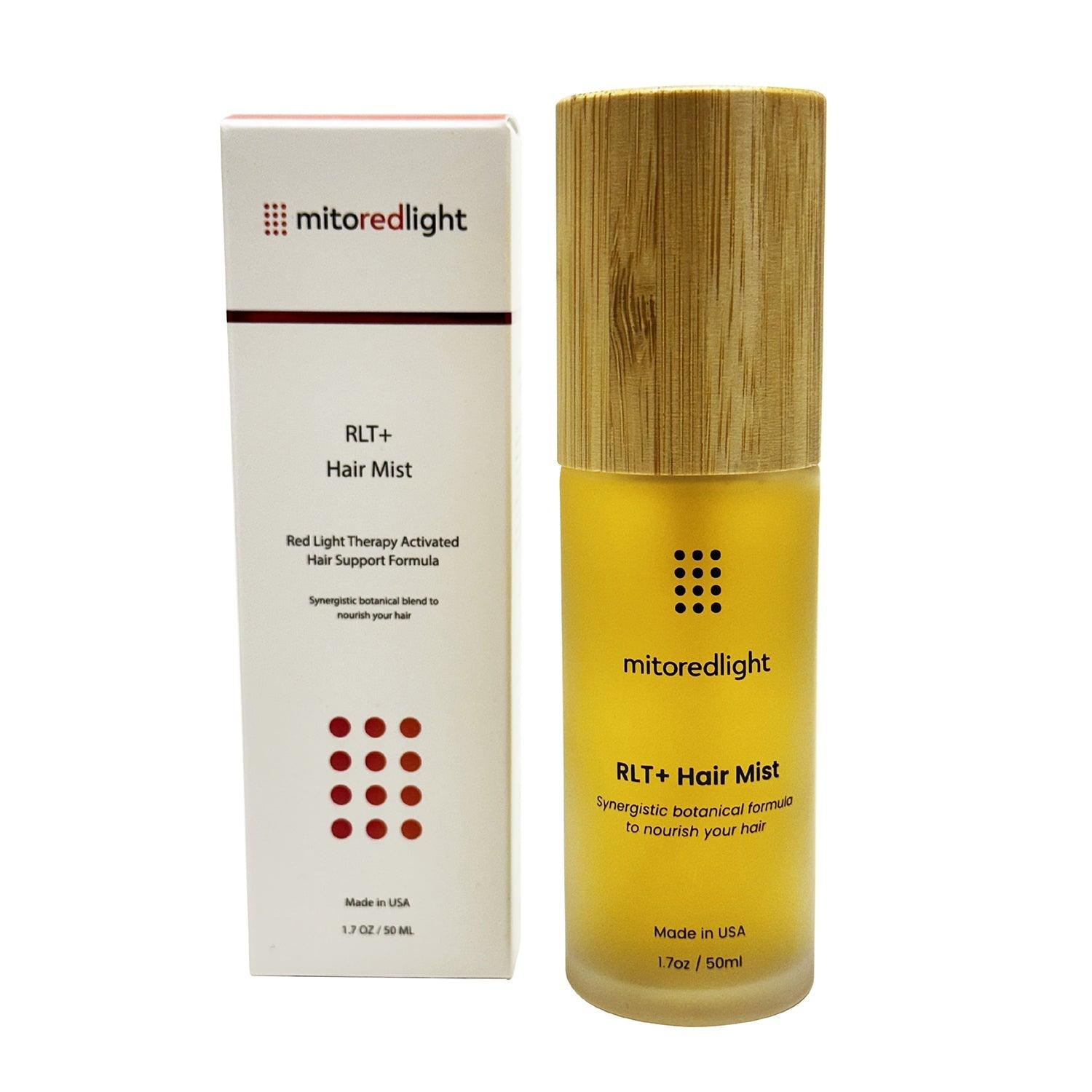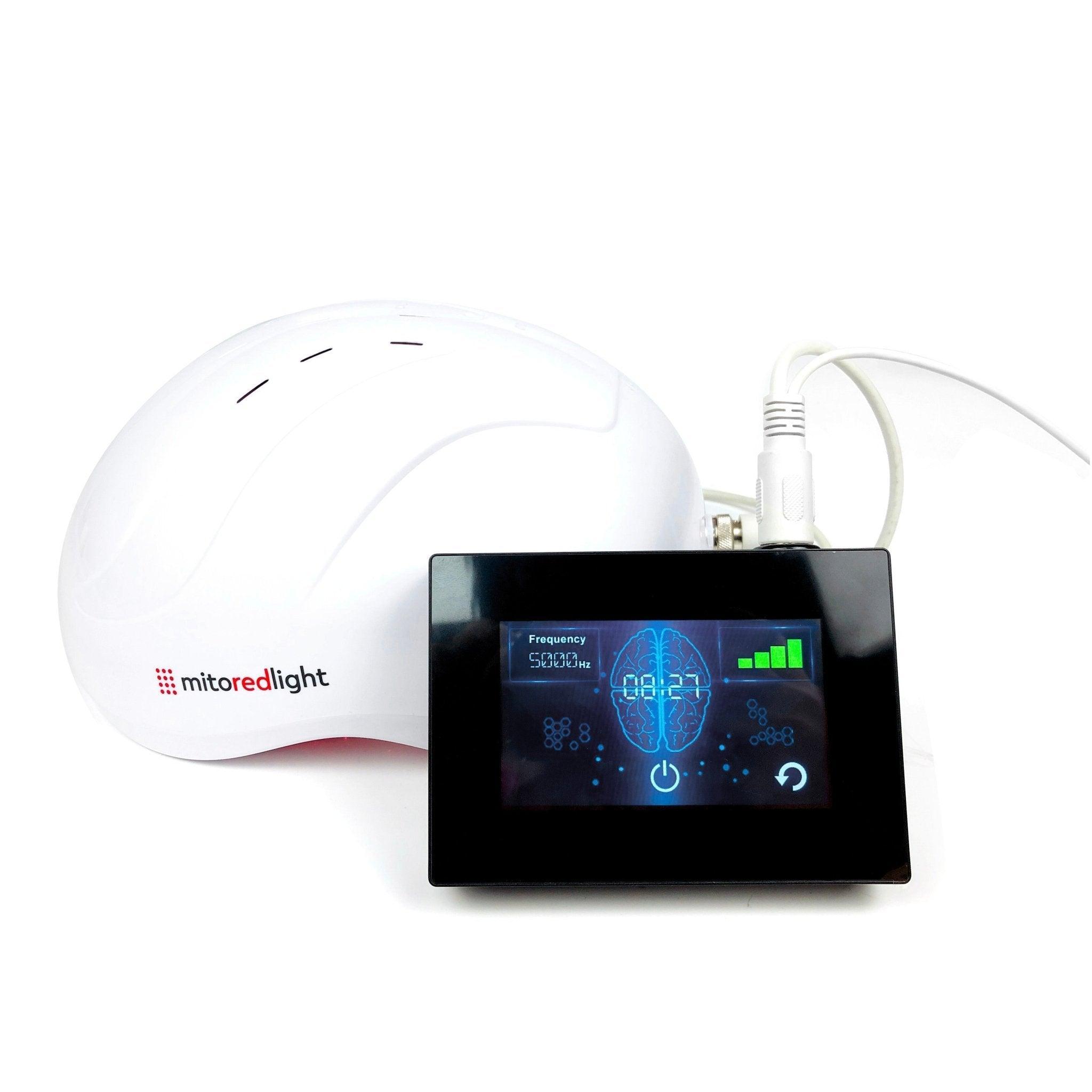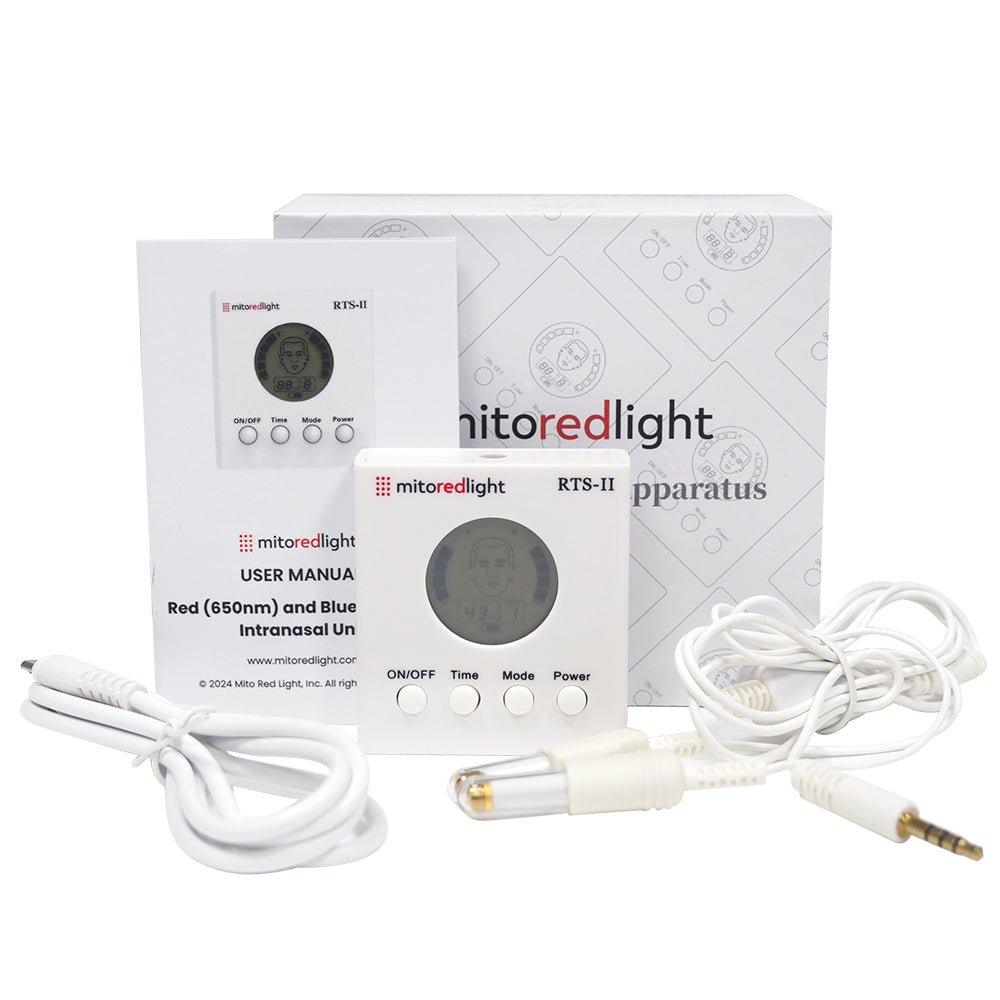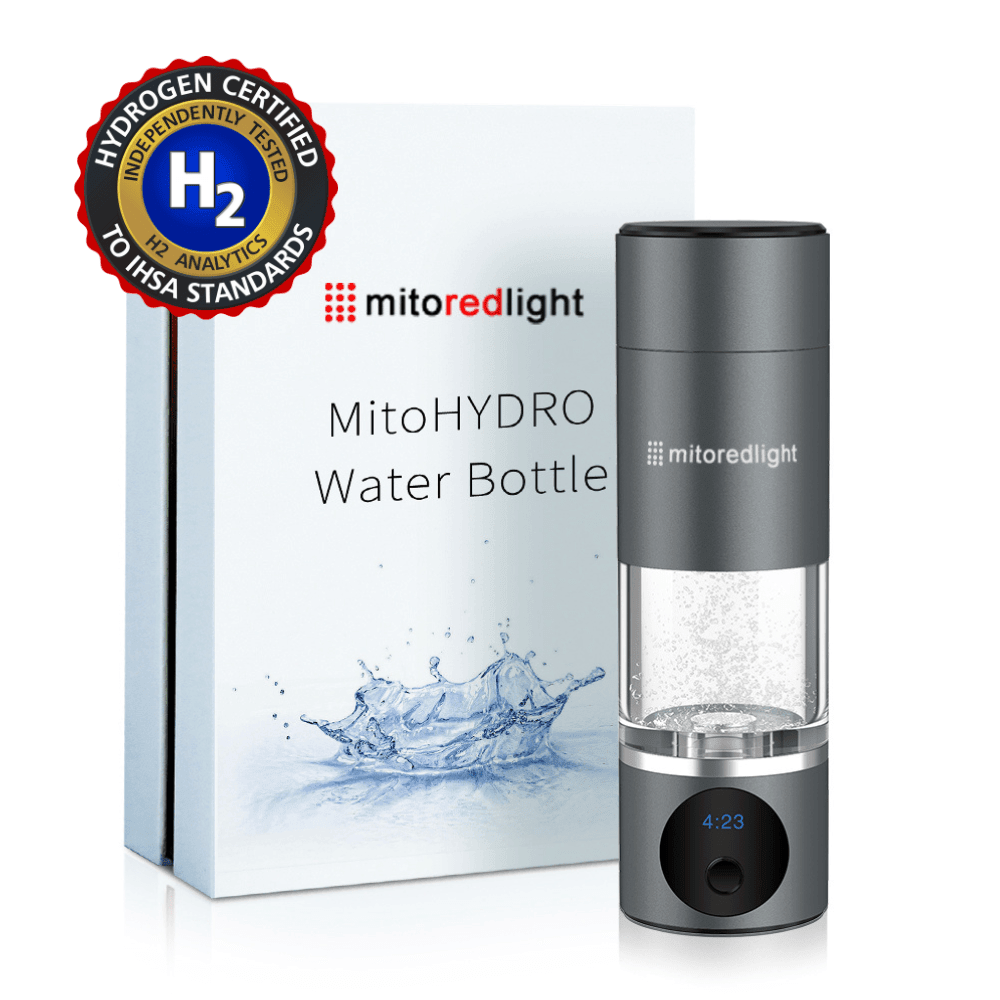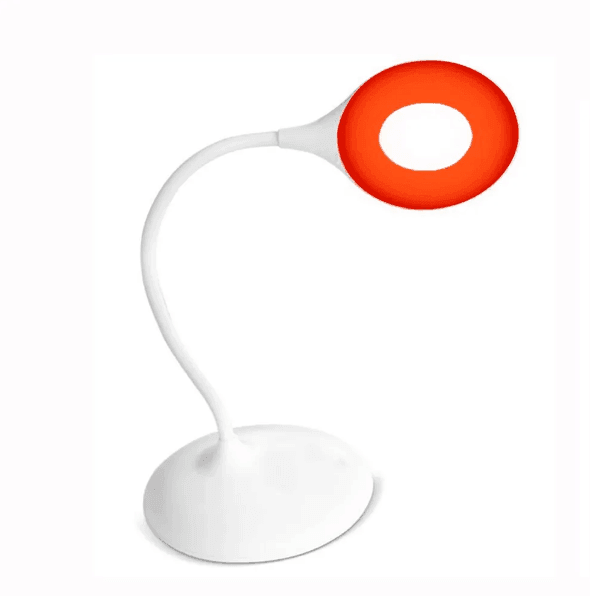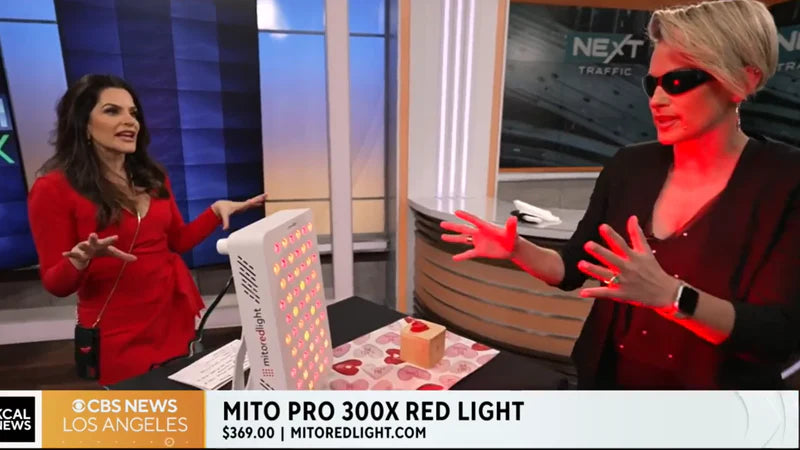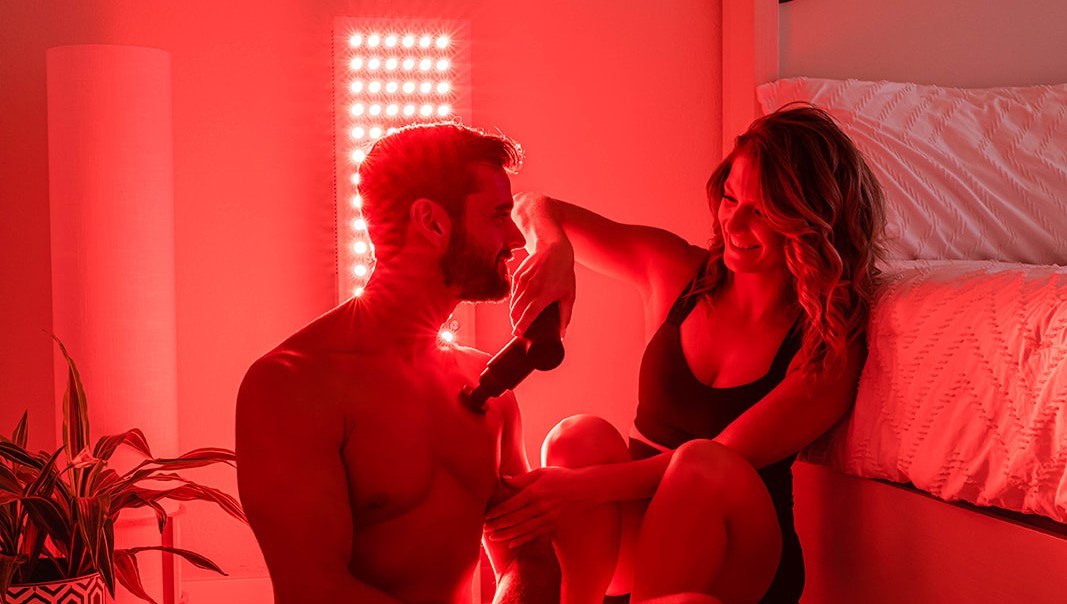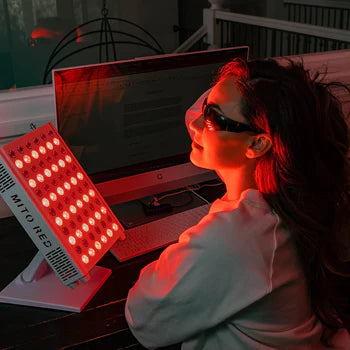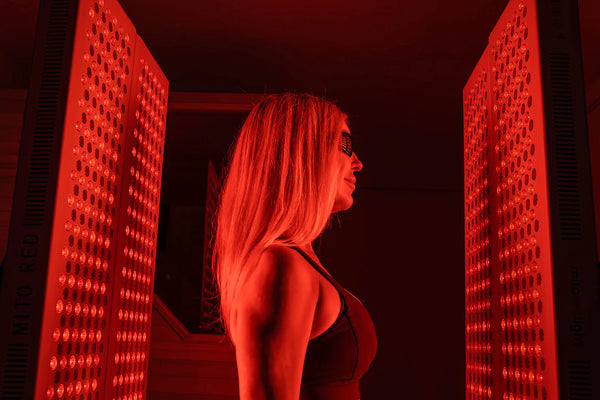DISCLAIMER: Mito Red Light devices are Class II wellness devices aimed at affecting the body through topical heating and supporting cellular function. The information provided in this article and on this site is for educational purposes only and is not intended to imply effectiveness of Mito Red Light devices for any specific application. The information provided in this article and on this site is not intended to diagnose, treat, cure, or prevent any disease, is not a substitute for consultation with a licensed medical provider and should not be construed as medical advice. Click here to read our article on potential contraindications of red light therapy..
Red Light Therapy at Home - The Definitive Buyer's Guide
Summary:
Mito Red Light®, established in 2019, has rapidly become a leading red light therapy company, recognized for its high-quality devices and a commitment to customer education. The company emphasizes the importance of informed purchasing decisions, offering a free buyer's guide and advocating for transparency regarding device power, wavelengths, and independent testing. Mito Red Light's products are utilized and recommended by athletes and wellness professionals, with numerous customer testimonials highlighting benefits such as improved skin, reduced pain, and enhanced recovery. The company differentiates itself through its focus on delivering a full spectrum of beneficial red and near-infrared wavelengths, maximizing LED density for optimal coverage, and providing transparent value with a risk-free trial and robust warranty.
Key Takeaways:
- Mito Red Light® is a prominent red light therapy company known for its quality products and customer focus.
- The company stresses the significance of understanding device power (irradiance), utilizing independent testing over less accurate solar meters.
- Mito Red Light devices deliver a broad spectrum of clinically studied red and near-infrared wavelengths for synergistic therapeutic effects.
- The company maximizes LED density in their panels to ensure optimal energy delivery across a significant treatment area.
- Mito Red Light offers transparent pricing, authenticated reviews, a comprehensive warranty, and a no-restocking-fee 60-day trial.
Table of Contents
- Who is Mito Red Light®?
- What is Red light Therapy?
- What are the Red Light Benefits?
- Why Should I Use Red Light Therapy?
- Key Questions to Ask When Choosing a Red Light Therapy Device
- Power / Irradiance
- Wavelengths
- Coverage Area
- Price
- Reviews
- Potential red flags when it comes to reviews:
- Warranty, Returns, Trial Period
- Customer Service
Red Light Therapy at Home - The Definitive Buyer’s Guide
We’ve put together a comprehensive overview of what questions consumers should be asking when deciding which is the best red light therapy device to purchase. We know for many, this is a large purchase, and they want to make sure they are investing wisely. Here is a quick summary of the primary features you should evaluate and questions you should have answered before making a buying decision.
Unfortunately, many companies in this industry take a simple topic (it’s just light after all) and do everything they can to make it overly complicated. They do this in an effort to confuse the consumer and ultimately justify a higher price tag. Our goal here is to cut through the noise and explain what really matters.
Who is Mito Red Light®?
Established in 2019, Mito Red Light is now one of the leading red light therapy companies in the world, if not the leading company. With over 75,000 ecstatic customers and new individuals joining our red light community everyday, we are pleased to share our knowledge and experience when it comes to the benefits of Red Light Therapy.
Our aim is always to thrive and help consumers and businesses when choosing the optimal red light therapy devices to buy. Recognizing that this is a significant investment for many individuals, Mito Red Light is dedicated to offer the best red light therapy devices you can use on-the-go, at home or at the office.
Experience the Mito Red difference today!
Because we want you to have a successful and unique red light therapy experience, we offer a free buyer’s guide including tips and FAQ to guide you through your wellness journey with red light therapy.
Within a very short period of time, Mito Red Light made itself an outstanding reputation for its high quality products and is now well known and recommended by famous athletes, including the 2021 Official Red light Therapy Partner at the Arizona Coyotes. celebrities, spas and other wellness and fitness businesses. People just love sharing their experiences with Mito Red Light Devices. Everyday we receive calls and testimonials from consumers saying how our red light therapy devices benefit their lives.
So are you next?
What is Red Light Therapy?
Red Light Therapy is a growing therapeutic modality, using low wavelengths to improve health in general, including skin conditions, mood disorders, physical pain and much more.
Some clinical researches show that RLT (Red Light Therapy) can reduce muscle, joint and dental pain, inflammation, psoriasis, acne and a lot of consumers also use it for its anti-aging and anti-wrinkle properties.
According to GMI (Global Market Insights), the Light Therapy Market was valued at $ 997 Million in 2022 and it says it will reach over $ 1.5 Billion by 2032.
For more information on What is Red Light Therapy, please read our article here
What are Red Light Benefits?
There are many potential reasons that people use red light therapy. As this form of phototherapy continues to be researched, new potential benefits of red light therapy are still being discovered.
The potential benefits of red light therapy device at home may include:
- Stimulates wound healing and tissue repair
- Reduces aging effects by supporting skin health and collagen production
- May help pain by decreasing inflammation and improving circulation
- Improves joint health
- Improves physical performance through improved muscle recovery and energy levels
- Improves sleep quality and duration
- Enhance Hair Growth, Hair Health
- Improves Energy & Mood, Brain Health
Why should I Use Red Light Therapy?
Nowadays, a lot of people do not spend much time outside. According to the EPA (Environmental Protection Agency), Americans spend 93% of their time indoors so the average American is “deficient” in these beneficial wavelengths of light.
The good news is that Red Light and Near Infrared Light Devices using high quality LEDs can provide these beneficial wavelengths in a very safe and easy to use manner.
For more information, read the “What is red light therapy” here.
“If everything seems dark around you, look again, be the light” - Rumi
“Upgrade Yourself With Red Light Therapy To Bring More Light at Home” -
Scott Chaverri, CEO of Mito Red Light
Key Questions to Ask When Choosing a Red Light Therapy Device
What is the power or irradiance of the device?
Will it deliver a sufficient amount of energy in a reasonable amount of time?
Does the manufacturer publish independent 3rd party diagnostic data on their devices?
Are the wavelengths used the correct ones, and are they most clinically studied to be beneficial?
Will the coverage area of the device help me achieve my goals in a reasonable amount of time?
Does the price of the device represent a good value?
Does the manufacturer have genuine seller and product reviews/testimonials?
Does the device come with a solid warranty?
Does the manufacturer have a seamless returns process and a truly no-risk trial?
Does the manufacturer provide good customer service both before and after a purchase is made?
 |
|
 |
|
Power / Irradiance
This is probably the most discussed topic and the one that can be the most confusing to consumers. There seem to be two distinct camps that manufacturers fall into when it comes to this topic.
There is one camp that argues that total energy delivered (joules) is ultimately what really matters and that independent diagnostic testing in a professional laboratory is the only way to measure this. We agree with this 100%.
The other camp argues that side-by-side comparison of devices with a solar meter is how the power/irradiance comparisons of the devices should be judged. These manufacturers make the misleading argument that the end consumer does not have the means to have professional testing done, so using solar irradiance meters is a reasonable proxy. The problem with this argument is that light manufacturers themselves DO have access to professional testing – so why do they not have it done and publish it? Solar meters (available for as little as $70) are notoriously inaccurate and highly variable when it comes to measuring the irradiance of these types of devices. In our own in-house testing with different solar meters, we’ve noticed measurement variability as high as 80%! It is quite amazing to us that some “leading” companies in this space even go as far as to say that solar irradiance meters are “extremely accurate”. We will do a future blog post demonstrating that this is just not true.
We will, however, concede that doing side-by-side comparisons of red light therapy devices with a solar irradiance meter is a “better than nothing” way for the end consumer to get a very rough gauge of the relative power of two different devices. We still see very underpowered devices being sold for several hundreds of dollars - a quick side-by-side comparison of these devices against a device like a Mito Red Light can be helpful. But to argue that solar irradiance meter tests should be THE STANDARD is just beyond the pale.
In 2022, an independent blogger and red light therapy expert did a side-by-side comparison of the top twelve red light therapy body panels on the market. The testing was not done with a cheap solar irradiance meter but with a high-end spectrometer. The MitoPRO 1500+ claimed first place in the power testing and first place in the overall comparison series!
Lastly, we leave you with these very important questions. If a red light therapy manufacturer is NOT having independent diagnostic testing of their devices done – how exactly do they (or you) even know that the device is emitting the wavelengths stated? And even more concerning, how are they arriving at their treatment recommendations? We sincerely hope they are not basing their treatment recommendations solely on their in-house measurements taken with a $70 solar irradiance meter.
Key Takeaway: Don’t buy a device from a manufacturer with inflated irradiance claims and nothing substantial behind it.
Wavelengths
The most scientifically proven red and infrared light therapy wavelengths are red (590-700nm) and near-infrared (NIR), primarily in the 800-900nm range.
Enhanced Spectral Energy Output™ (ESPEO) - Mito Red Light devices are designed to deliver light energy across the ENTIRE therapeutic spectrum of Red and Near Infrared (NIR). This means with our MitoPro+ and MitoAdapt 2.0 Series, you benefit from ALL wavelengths of red between 590nm-700nm and ALL wavelengths of NIR between 800-900nm. Your body receives a FULL therapeutic spectrum of red and NIR just as nature intended!
As the spectral graph from our independent testing of the MitoPRO+ shows when you use a MitoPRO+, you are getting a FULL SPECTRUM of both beneficial red (590-700nm) and beneficial NIR (800-900nm).
This is much more aligned with what you would experience in nature (a wide band vs. narrow band of energy). Read more about the advanced MitoPRO+ Series design here.

Key Takeaway: Mito Red Lights deliver a complementary blend of red and NIR with synergistic energy delivered across the entire targeted spectral ranges.
@mitoredlightofficial It’s no wonder Mito has been topping the charts of RLT brands! 🔴 #MitoRedLight #RedLightTherapy #HealthyLifestyleTips #LightTherapy #HealthyLifestyle ♬ I Think I Like When It Rains - WILLIS
Coverage Area
When it comes to red light therapy devices, size does matter. If you are looking for red light therapy for the face or specific parts of the body, the MitoMIN 2.0 and MitoPRO 300+, both with built-in timers and tabletop stands, provide unbeatable value.
When it comes to full-body red light therapy, you’ll want to compare the specs of the different devices very carefully. Some competitors’ "full body" panels only come with 100 or 150 LEDs - whereas our MitoMAX 2.0 has 200 LEDs, and the MitoMEGA 2.0 or MitoPRO 1500+ have a whopping 300 LEDs. What is the point of offering a larger panel if it is simply diluting (i.e., spreading out) the energy delivered to the end user? At Mito Red Light, we maximize the number of LEDs we put into each panel - so you can get maximum power delivered to the most surface area of your body possible.
Key Takeaway: Don’t just look at the size of the panel. Look at the number of LEDs contained therein, the power consumption of those LEDs, and most importantly, the total joules those LEDs deliver per treatment session.
Price
Snazzy websites, celebrity or ‘influencer’ endorsements, purposefully confusing ad copy – all designed to get you to pay more than you have to for the effective red light therapy you are seeking. Our simple goal is to offer innovative products, delivering energy across the entire therapeutic RED / NIR spectrums and at power levels representing unmatched value. Based on multiple independent tests, we do just that.
Key Takeaway: You don’t have to overpay for the red light therapy you seek. Choose a company that delivers good value but has independent data to demonstrate that you are, in fact, ultimately getting what is claimed. Buying on price alone is likely to get you an underpowered device from a cut-rate company.
Reviews
Fake reviews are a real problem these days on the interwebs. Many of the large tech companies are investing huge sums in an effort to curtail this unscrupulous business tactic. At Mito Red Light, our seller reviews are authenticated by an independent third-party review aggregator. The whole purpose of these Google-approved review aggregators is to authenticate each review that is submitted. Furthermore, we specifically ask our customers, when leaving a product review, to upload a photo/video. This is meant to give potential customers an increased level of comfort that these are REAL people sharing their REAL experiences.
Potential red flags when it comes to reviews:
- All or almost all of the reviews are 5 stars and there are no 1 or 2-star reviews.
- A company claims to have been in business for several years yet has very few reviews or all of its reviews are very recent.
- A company has reviews that are clustered in a small time frame. We have seen one company in this space that quite amazingly has managed to collect ALL of its customer reviews in August 2019. We are not quite sure how that could / would happen organically.
Key Takeaway: Unfortunately, companies are incentivized to fabricate and/or manage reviews, and many choose to do so. Curating reviews slowly and methodically by providing outstanding customer service and offering a great product at a great value is a much more challenging road to travel. Do business with companies that use a Google-approved third-party aggregator to authenticate their reviews.
Warranty, Returns, Trial Period
At Mito Red Light®, we have 1 year warranty on belts, mats, helmets and mobiles, a full 2-year warranty on our Original 2.0 Series and an industry-leading 3-year warranty on our MitoPRO and MitoADAPT Series. Our warranty and returns policies can be read here. With a headquarter in Arizona in the USA, we aim to expand our global footprint to better serve our customers.
60-Day NO-RISK Trial Period - Mito Red Light is the only major company in this space that does not charge a restocking fee for elective returns. We are so confident you will love your device and keep it. We would not even think of charging a 25% restocking fee on the occasional return. Unfortunately, other companies will aggressively advertise a "trial period" while leaving in the fine print that they plan on keeping 15-25% of your money if you are not satisfied with their product and decide to return it.
Customer Service
Buying a red light therapy device can be a big investment. You deserve to be able to talk to an actual live person both before and after investing your money. Imagine- if you cannot talk to a live person BEFORE you make a buying decision – how responsive do you expect the company to be if you have a problem with your item?
We hope you find this red light therapy buyer’s guide helpful!
Questions? Feel free to call us: +1 866-861-6486.
